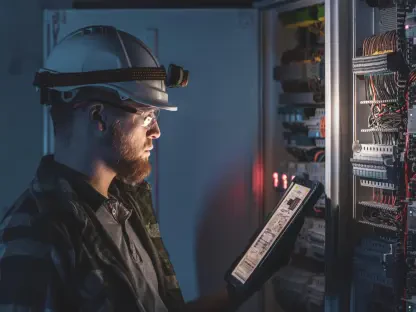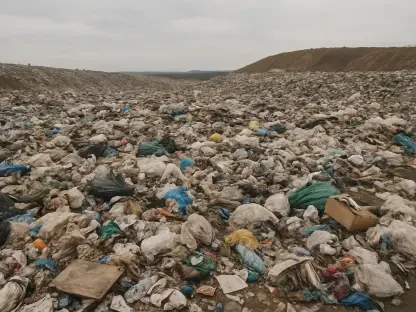I’m thrilled to sit down with Christopher Hailstone, a seasoned expert in energy management, renewable energy, and electricity delivery. With his deep knowledge of grid reliability and security, Christopher offers a unique perspective on the pressing challenges facing the energy sector today. In this conversation, we dive into the heart of the energy affordability crisis, exploring the pitfalls of relying on new gas plants, the real costs of such infrastructure, and the promising alternatives that could shape a more sustainable and cost-effective future for utilities and consumers alike.
Can you start by shedding light on the root causes of the energy affordability crisis we’re seeing across the United States right now?
Absolutely, Emilia. The affordability crisis is driven by a combination of soaring electricity demand and rapidly rising prices. We’re seeing unprecedented load growth from things like data centers and electrification of transportation, which puts immense pressure on the grid. At the same time, the costs of generating and delivering power have spiked due to inflation, supply chain issues, and volatile fuel prices. This hits communities differently—low-income households are often the hardest hit, forced to spend a larger share of their income on bills, while rural areas sometimes face higher rates due to infrastructure challenges. It’s a complex problem with no one-size-fits-all fix.
Why do you think the push by some utilities to build new gas plants as a solution to affordability and reliability concerns is misguided?
I’m glad you asked. Gas plants are often pitched as a quick fix for reliability, but they’re a risky bet. They lock us into decades of fuel costs and carbon risks at a time when cleaner, cheaper alternatives are available. Gas doesn’t address the core issue of affordability—in fact, it exacerbates it by tying consumers to volatile fuel markets. Plus, the environmental impact and potential for stricter regulations down the line could saddle ratepayers with stranded assets. It’s a short-term mindset that ignores long-term consequences.
Your recent analysis shows that the costs of building new gas plants, like combustion turbines and combined cycle units, are much higher than previously thought. Can you break down those figures for us?
Sure. Our latest data indicates that the cost of new combined-cycle gas turbine projects is around $2,000 per kilowatt, which is a big jump from older estimates of $1,116 to $1,427 per kilowatt for plants slated for completion in the next few years. When you factor in fuel costs over 20 years—conservatively estimated at $1,500 per kilowatt—and pipeline infrastructure at about $500 per kilowatt, you’re looking at total costs trending toward $4,000 to $4,500 per kilowatt. These numbers have climbed due to supply chain disruptions, labor shortages, and material cost inflation. It’s a sticker shock that many planners haven’t fully grappled with.
How do these staggering costs for new gas plants stack up against alternatives like solar paired with storage?
That’s the key question. Solar plus storage is already competitive in many regions, often coming in at or below the cost of new gas plants, especially when you consider the declining cost trajectory of renewables. Beyond price, these alternatives offer benefits like zero fuel costs, lower maintenance, and no carbon liability. They also provide flexibility to the grid, helping balance supply and demand more effectively. For long-term planning, they’re a smarter investment because they reduce exposure to price volatility and align with decarbonization goals.
There seems to be a real gap between outdated cost assumptions in regulatory planning and the actual costs of gas plants. How is this disconnect impacting decisions in the energy sector?
It’s a huge issue. Many utilities and regulators are still basing their integrated resource plans on cost data that’s years old, underestimating the true price of new gas infrastructure. This leads to decisions that look good on paper but fall apart in reality, risking overinvestment in expensive projects that don’t deliver on affordability or reliability. Consumers end up footing the bill for these missteps through higher rates, and it delays the adoption of more cost-effective solutions. It’s a classic case of planning with blinders on.
I’d like to touch on a specific case—Entergy’s proposal to build new gas plants in Texas. What are your thoughts on their plan, and are there red flags that stand out to you?
Entergy’s proposal to build 2.4 gigawatts of new gas capacity in Texas raises serious concerns. They’ve set a cost cap of $2.4 billion to be recovered from ratepayers, but given current construction costs, that figure seems overly optimistic. Turbine backlogs are stretching into the 2030s, and costs are far higher than budgeted in many cases. On top of that, they haven’t adequately explored lower-cost alternatives like renewables or demand-side management. It feels like a rush to build without fully weighing the financial and strategic risks for consumers.
You’ve also noted that even acquiring existing gas plants is becoming more expensive. What’s behind this trend, and how significant is the cost increase?
Yes, the cost of buying existing gas assets has risen sharply. Since 2010, the average sale price has gone up by about $40 million per year, with a threefold increase just since 2020. This is driven by high demand for ready-to-go capacity, especially in areas with rapid load growth, combined with a tightening market for these assets. Investors and utilities are competing for a limited pool of plants, driving up prices. It’s another signal that relying on gas—whether new or existing—isn’t the bargain it’s often made out to be.
Looking ahead, what’s your forecast for the future of energy affordability and the role of gas in the utility sector?
I think we’re at a turning point. If utilities and regulators keep doubling down on gas, we’ll see affordability challenges worsen as costs continue to climb and carbon risks mount. But I’m optimistic about the potential for a shift. Renewables, storage, and demand-side solutions are becoming more viable every day, and they offer a path to stabilize costs while enhancing grid reliability. My forecast is that within the next decade, we’ll see a dramatic pivot away from gas in favor of a more diverse, sustainable energy mix—if we can get the policy and planning right now. It’s about making bold, forward-thinking choices today to avoid bigger problems tomorrow.









